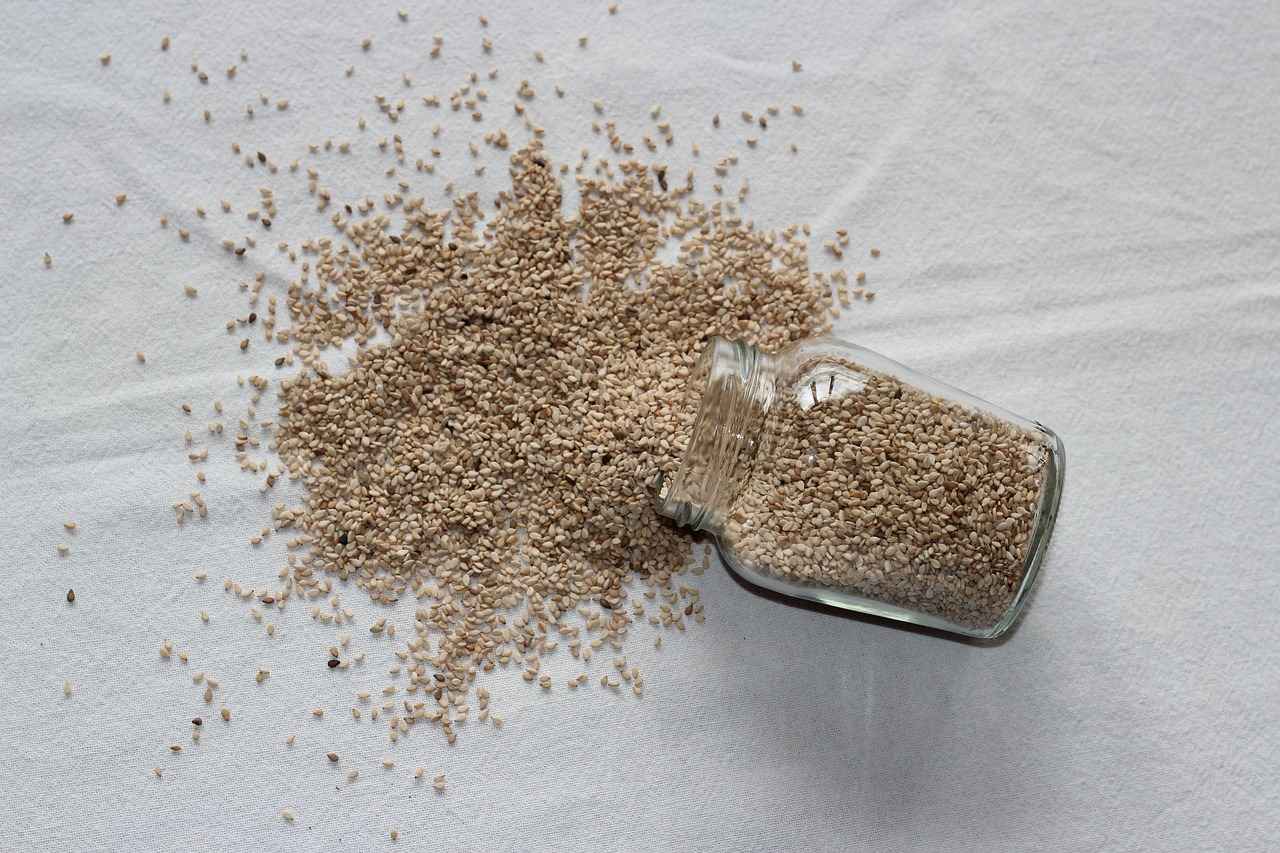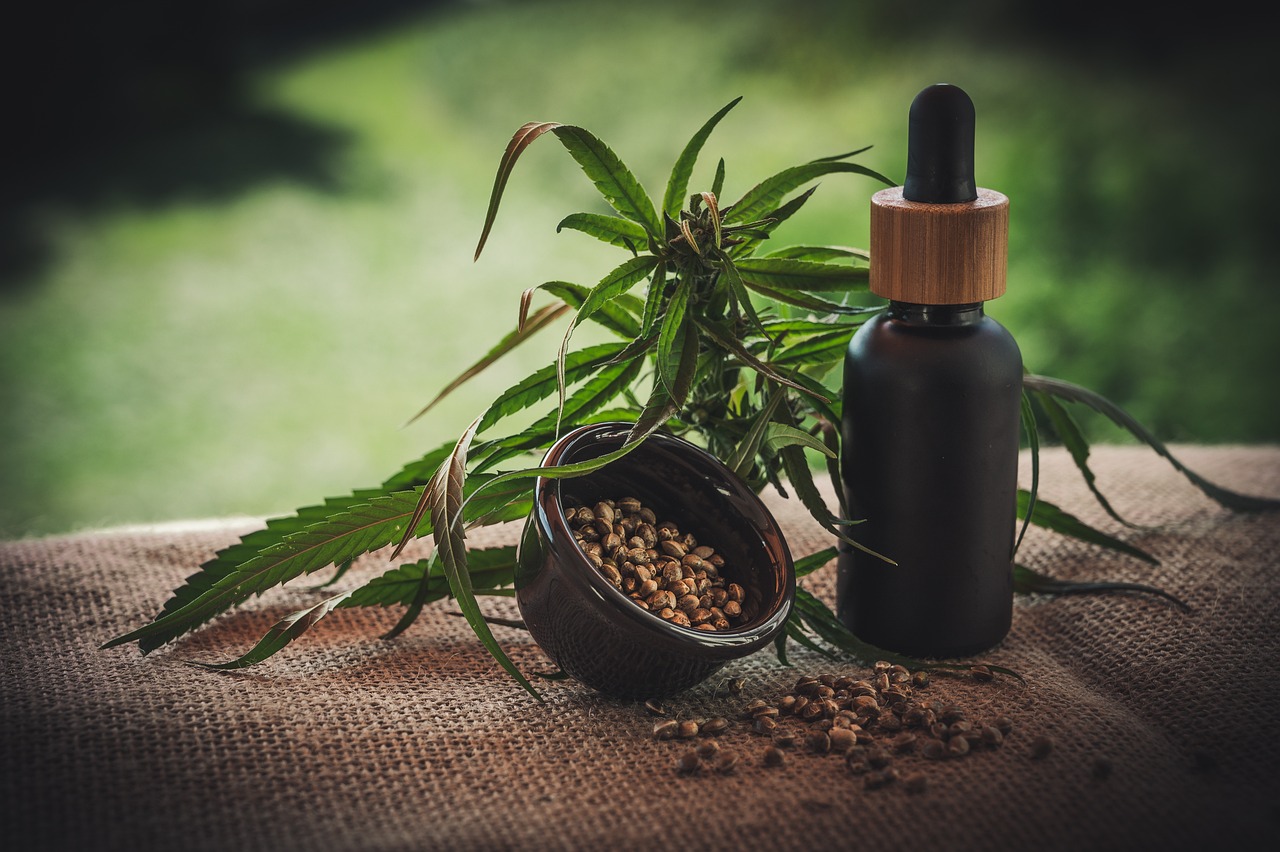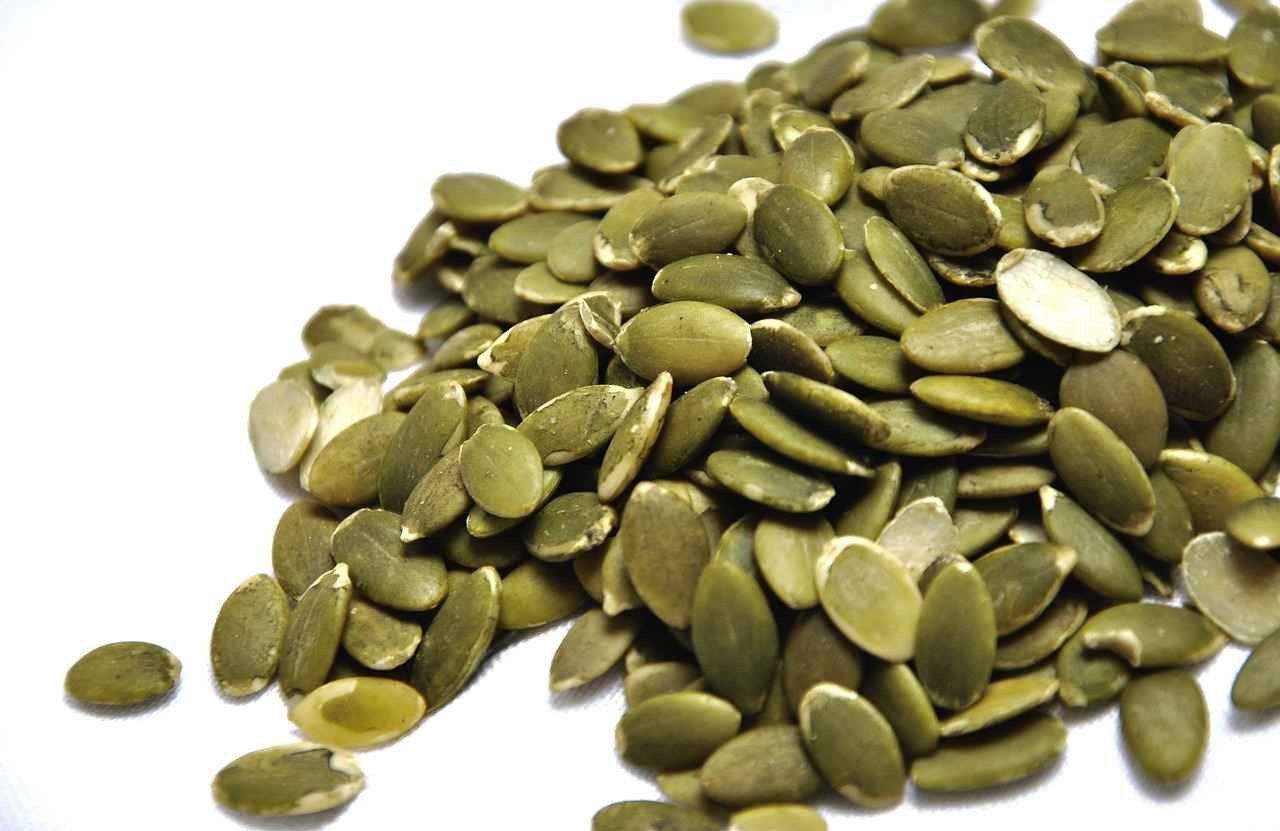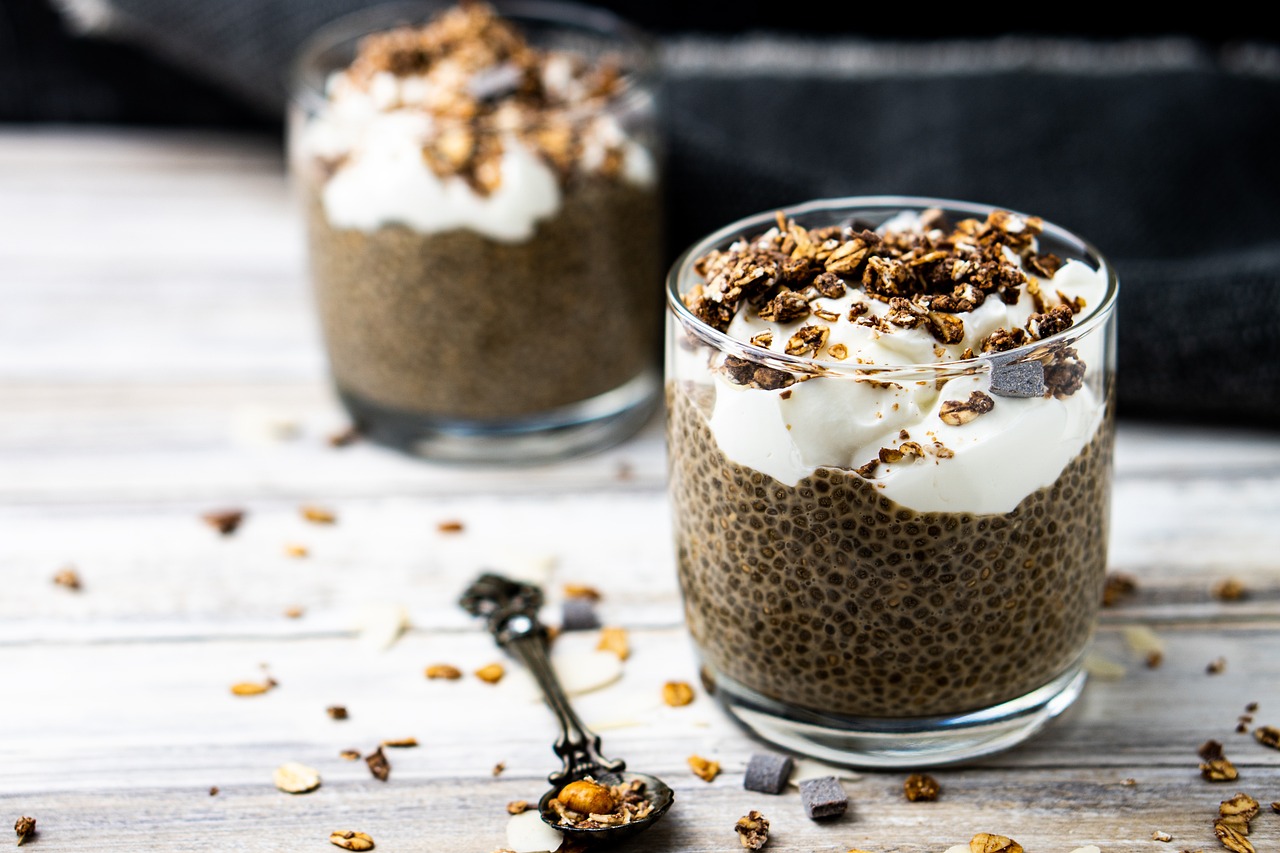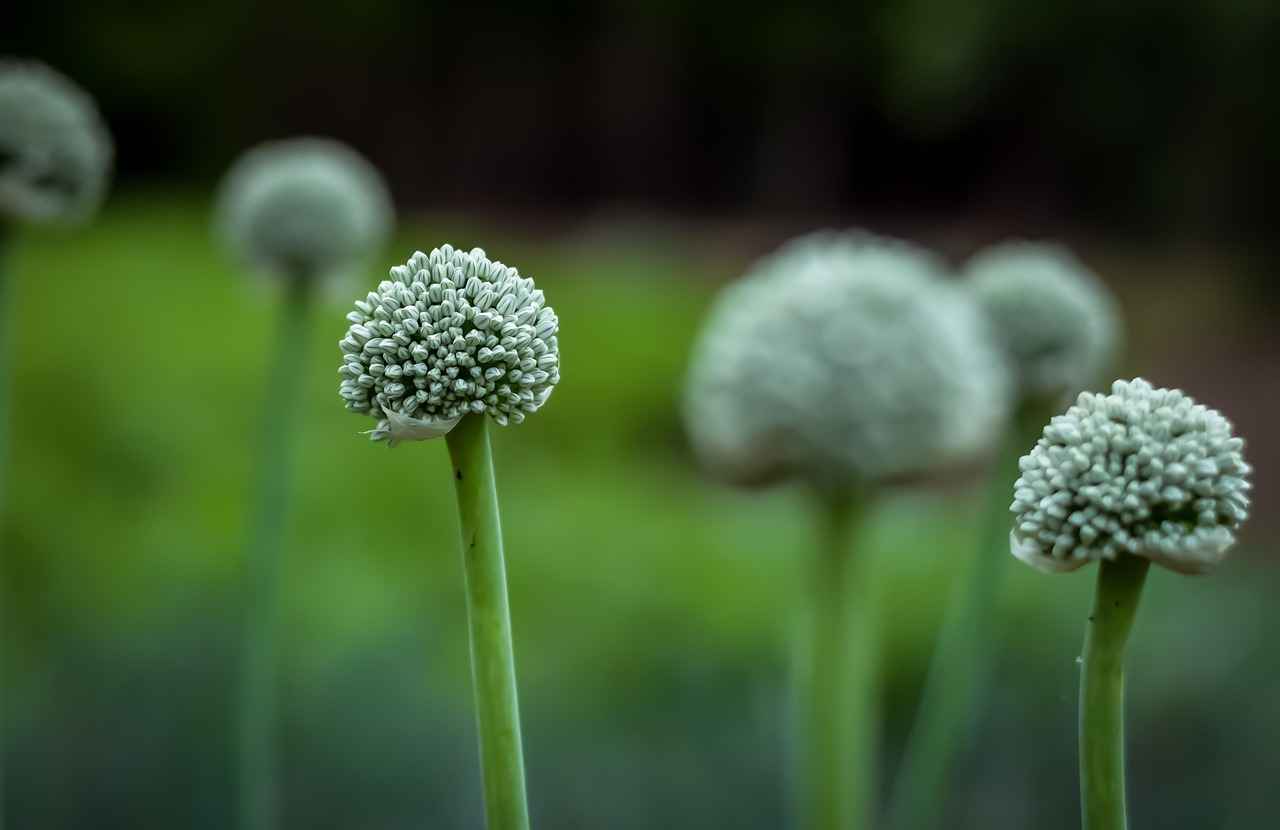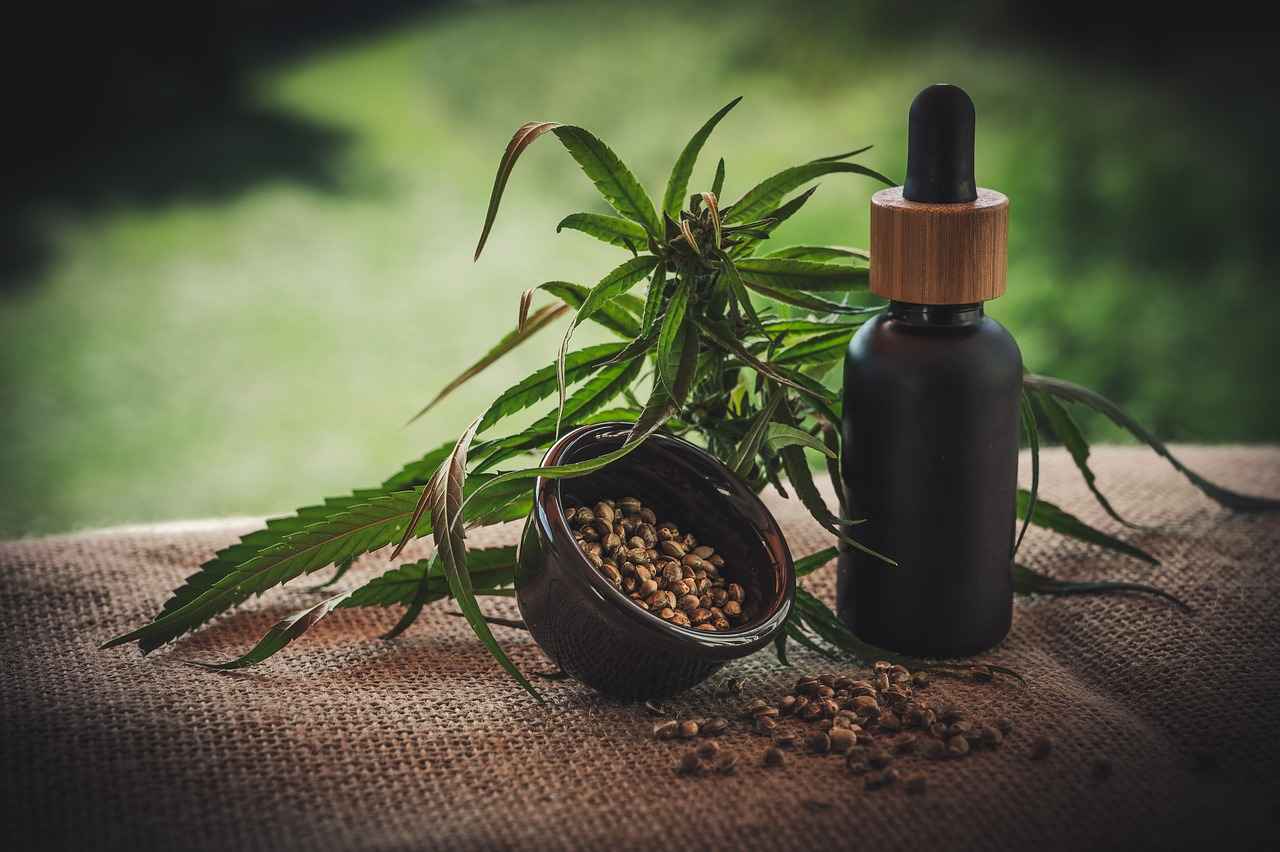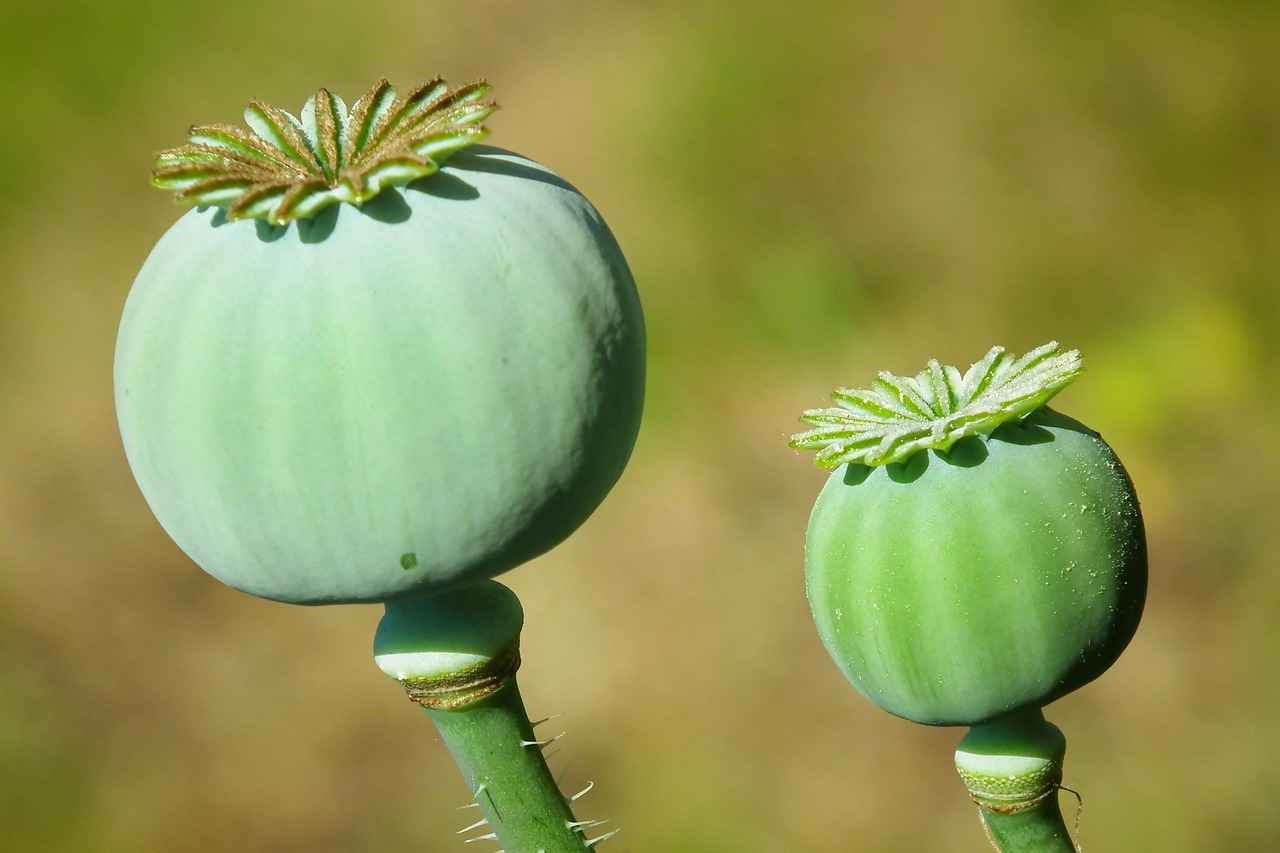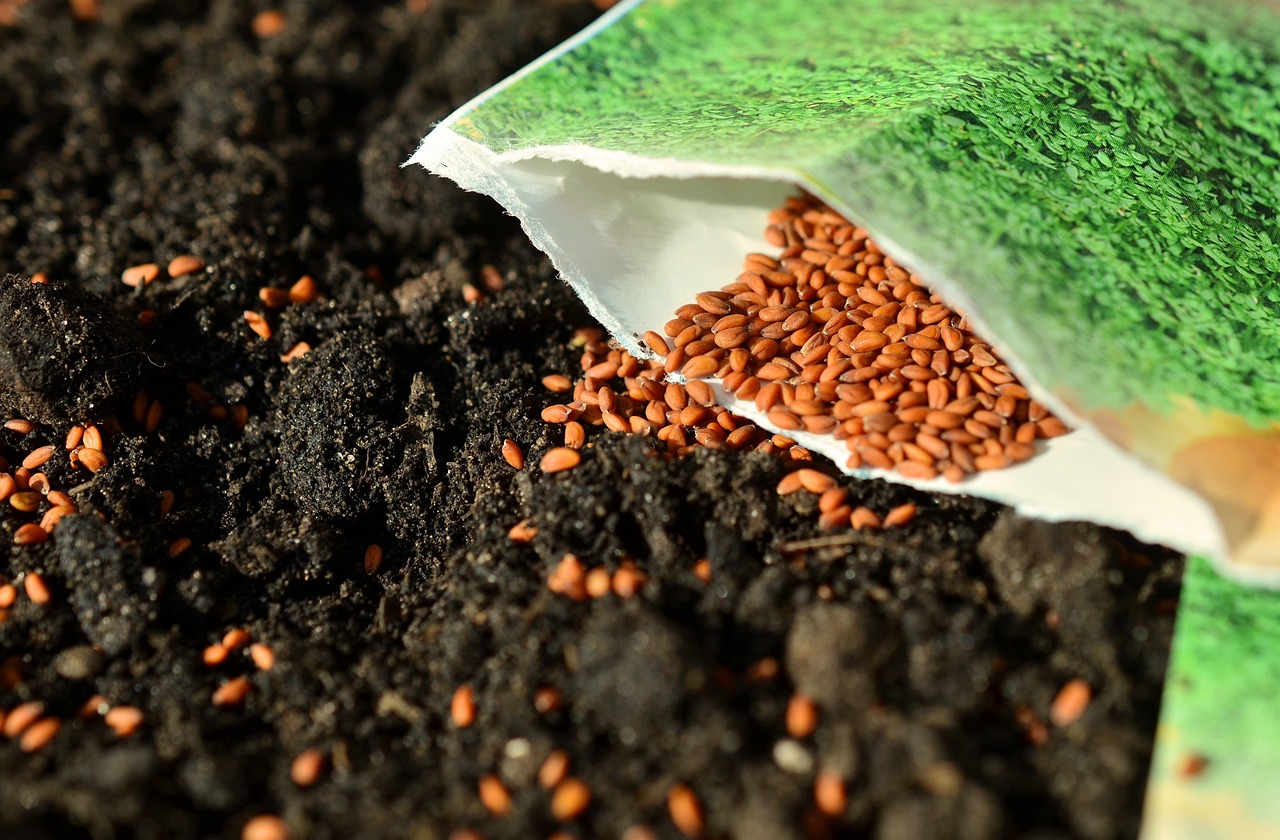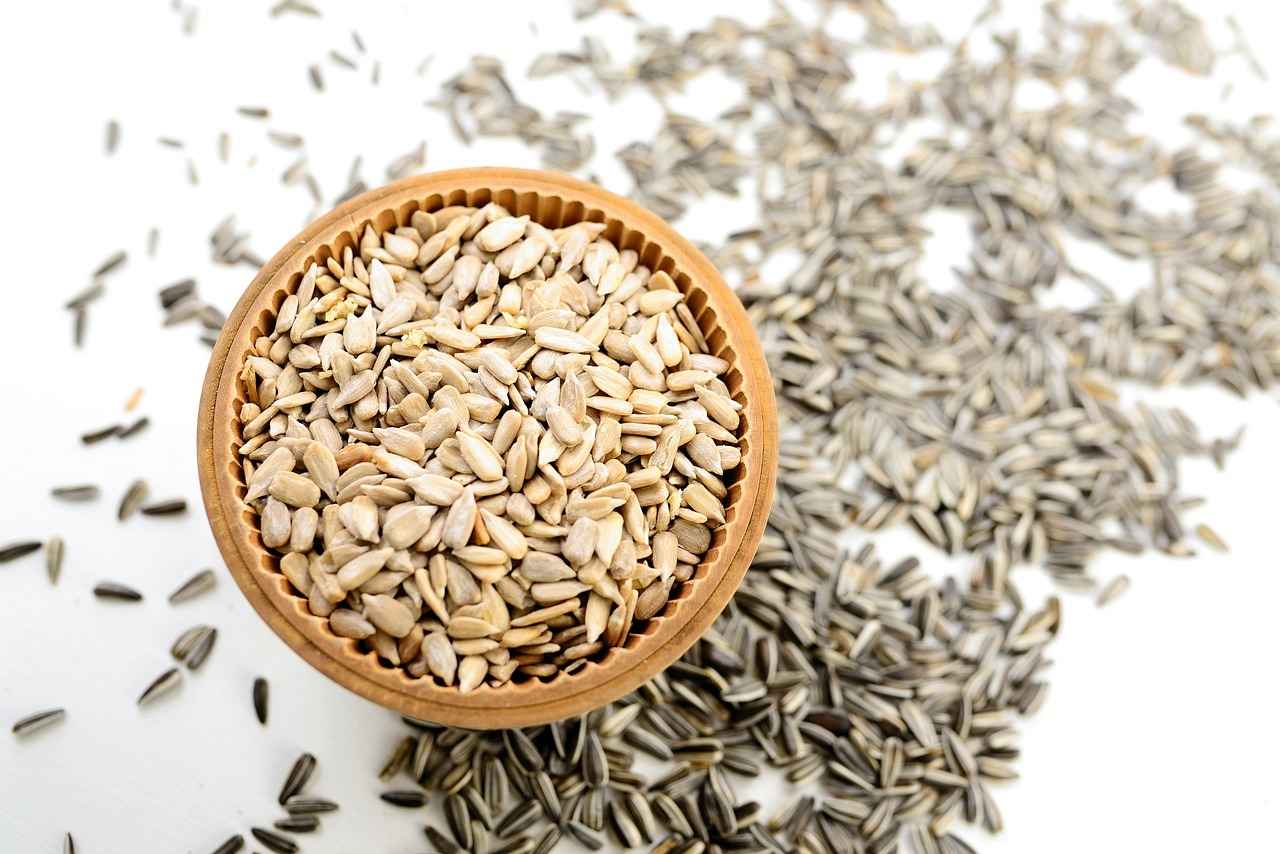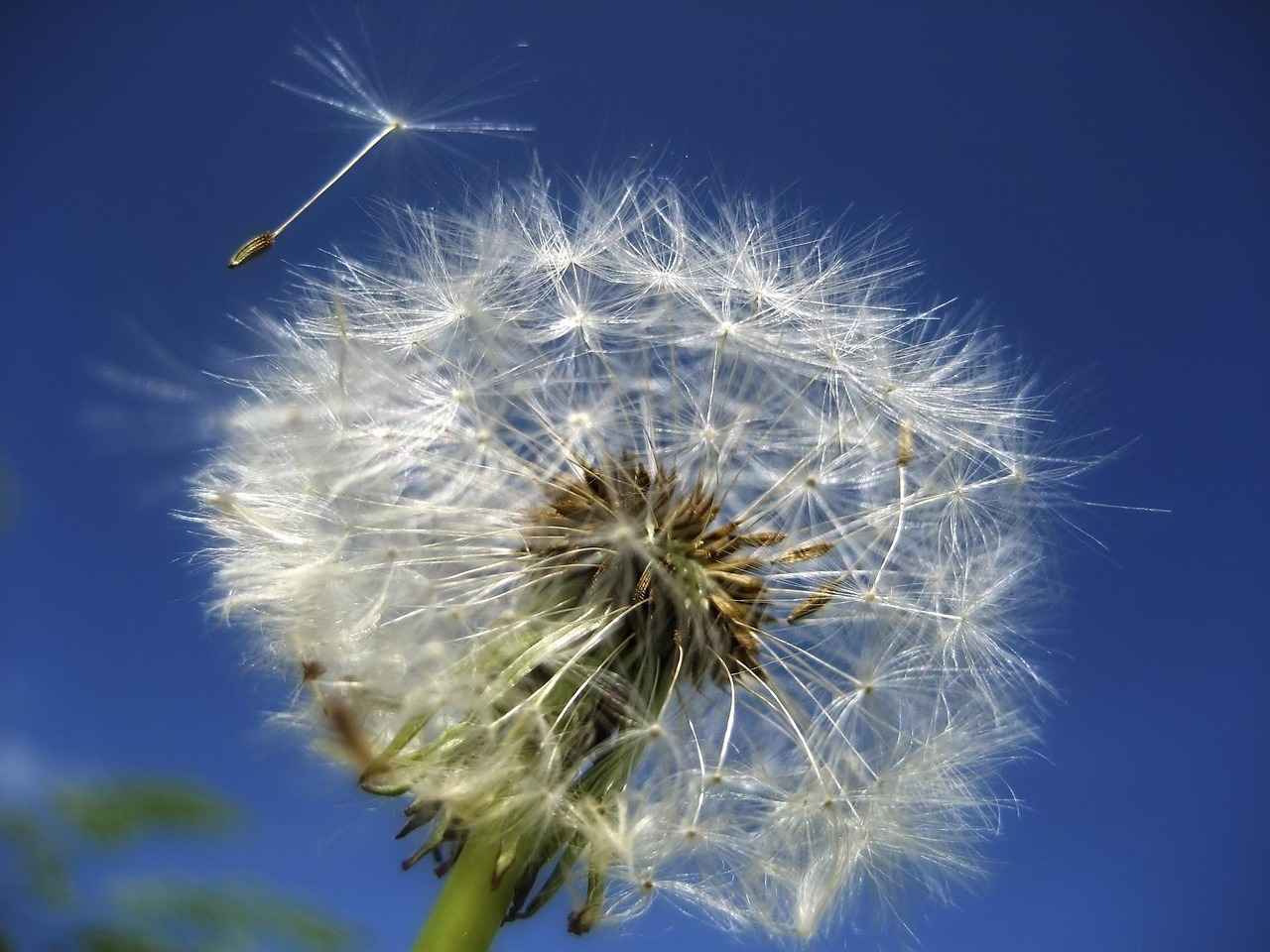This article explores the various methods of incorporating chia seeds into your daily meals, highlighting their nutritional benefits and offering practical tips for consumption. Chia seeds are versatile, nutrient-dense, and easy to use, making them a popular choice for anyone looking to enhance their diet.
What Are Chia Seeds and Their Nutritional Benefits?
Chia seeds are tiny black seeds derived from the Salvia hispanica plant. These seeds are packed with omega-3 fatty acids, fiber, protein, and various essential minerals, making them a superfood for health enthusiasts. Just a single ounce (28 grams) of chia seeds contains:
- 11 grams of fiber
- 4 grams of protein
- 5 grams of omega-3 fatty acids
- Calcium, magnesium, and phosphorus
How to Prepare Chia Seeds for Consumption?
Preparing chia seeds is simple and can be done in several ways. They can be eaten raw, but soaking them in liquid enhances their digestibility and nutrient absorption. This method not only makes them easier to consume but also allows them to expand and form a gel-like consistency.
Soaking Chia Seeds: Why Is It Important?
Soaking chia seeds in water or milk is beneficial as it aids in hydration and improves digestion. The gel-like consistency helps to slow down digestion, promoting a feeling of fullness and sustaining energy levels.
How Long Should You Soak Chia Seeds?
Typically, soaking chia seeds for 20-30 minutes is sufficient. However, for maximum absorption, you can soak them overnight, making them ready for various recipes the next day.
Can You Eat Chia Seeds Dry?
Yes, chia seeds can be eaten dry, but it’s advisable to consume them with plenty of water to avoid digestive discomfort due to their high fiber content.
What Are the Best Recipes for Chia Seeds?
Chia seeds can be incorporated into various recipes, enhancing flavor and nutrition without altering the dish’s texture significantly. Here are some popular ways to use them:
- Smoothies: Adding chia seeds to smoothies boosts their nutritional profile and adds a pleasant texture.
- Chia Seed Pudding: Mix chia seeds with your choice of milk and sweetener, refrigerate until thickened for a delicious treat.
- Breakfast Ideas: Sprinkle chia seeds on oatmeal, mix into yogurt, or blend into pancakes.
- Salads: Sprinkle chia seeds on salads for a nutrient boost and added crunch.
What Are the Health Benefits of Regular Chia Seed Consumption?
Regularly consuming chia seeds can lead to improved heart health, better digestion, and increased energy levels. Their rich nutrient content and antioxidant properties can significantly contribute to overall well-being.
How Do Chia Seeds Support Weight Loss?
Chia seeds can aid in weight loss by promoting a feeling of fullness due to their high fiber content. This can help to reduce overall calorie intake throughout the day, making them an excellent addition to a weight management plan.
Are There Any Potential Side Effects?
While chia seeds are generally safe, overconsumption can lead to digestive issues. It’s important to start with a small amount and increase gradually to avoid discomfort. Always ensure adequate hydration when consuming chia seeds, especially if eaten dry.

What Are Chia Seeds and Their Nutritional Benefits?
Chia seeds, derived from the Salvia hispanica plant, are tiny black seeds that have gained immense popularity in the health and wellness community. Known for their impressive nutritional profile, these seeds are often referred to as a superfood. They are rich in omega-3 fatty acids, dietary fiber, and protein, making them an excellent addition to a balanced diet.
Chia seeds are incredibly versatile and can be easily incorporated into various meals. They are a great source of plant-based protein, which is essential for muscle repair and growth. Additionally, they are loaded with fiber, which aids in digestion and helps maintain a healthy gut. A single ounce (about 28 grams) of chia seeds contains approximately:
| Nutritional Component | Amount per 1 oz (28g) |
|---|---|
| Calories | 137 |
| Protein | 4.7g |
| Fat | 8.6g |
| Carbohydrates | 12g |
| Fiber | 10.6g |
| Omega-3 Fatty Acids | 5g |
This impressive composition makes chia seeds an excellent choice for anyone looking to enhance their nutritional intake. The high omega-3 fatty acid content, particularly alpha-linolenic acid (ALA), is known to support heart health by reducing inflammation and lowering cholesterol levels. Furthermore, the fiber content helps regulate blood sugar levels, making chia seeds a beneficial food for those managing diabetes.
The soluble fiber found in chia seeds absorbs water and forms a gel-like substance in the gut. This process not only aids in hydration but also promotes regular bowel movements, reducing the risk of constipation. Moreover, the prebiotic properties of chia seeds support the growth of beneficial gut bacteria, contributing to improved overall digestive health.
Many individuals seeking to manage their weight have turned to chia seeds due to their ability to promote a sense of fullness. When consumed, chia seeds expand in the stomach, which can help curb hunger and reduce calorie intake. This makes them a great addition to meals or snacks for those looking to maintain or lose weight.
Incorporating chia seeds into your diet is simple and can be done in various ways:
- Smoothies: Add a tablespoon of chia seeds to your favorite smoothie for an extra nutrient boost.
- Puddings: Mix chia seeds with milk or a dairy alternative and let them soak overnight to create a delicious pudding.
- Oatmeal: Stir chia seeds into your morning oatmeal for added texture and nutrition.
- Baking: Use chia seeds in muffins, bread, or pancakes for a healthy twist.
- Salads: Sprinkle chia seeds on salads to enhance flavor and crunch.
These tiny seeds are not only nutritious but also incredibly versatile, making them an easy addition to any meal. Whether you enjoy them in smoothies, puddings, or salads, chia seeds can significantly contribute to your overall health.

How to Prepare Chia Seeds for Consumption?
Preparing chia seeds is a straightforward process that opens the door to numerous health benefits. These tiny seeds can be enjoyed in various ways, allowing for flexibility in your diet. Whether you choose to eat them raw or soak them in liquid, each method offers unique advantages that enhance their digestibility and nutrient absorption.
Soaking chia seeds is particularly beneficial as it allows them to absorb liquid and expand, forming a gel-like consistency. This process not only makes them easier to digest but also boosts their nutrient availability. When soaked, chia seeds can help with hydration, making them an ideal addition to smoothies or as a topping for various dishes.
The soaking time can vary based on personal preference and intended use. Typically, soaking chia seeds for 20-30 minutes is sufficient to achieve a desirable texture. However, for those looking to maximize nutrient absorption and versatility, soaking them overnight is recommended. This method ensures that the seeds are fully expanded and ready for a variety of recipes.
While it is possible to consume chia seeds dry, it is advisable to do so with plenty of water. The high fiber content in chia seeds can lead to digestive discomfort if consumed without adequate hydration. To incorporate dry chia seeds into your diet, consider adding them to yogurt or mixing them into baked goods, ensuring you drink enough fluids throughout the day.
- Chia Seed Pudding: Combine chia seeds with your choice of milk and sweetener, then refrigerate until thickened for a delicious dessert.
- Chia-Infused Smoothies: Blend soaked chia seeds into your favorite smoothie recipes for added texture and nutrition.
- Chia in Breakfast Dishes: Sprinkle chia seeds on oatmeal, mix them into pancakes, or incorporate them into breakfast muffins for a nutritious start to your day.
Chia seeds can also be a delightful addition to salads. Simply sprinkle them on top to enhance crunch and flavor. Their nutty taste complements a variety of greens and dressings, making them a versatile ingredient. Additionally, they provide essential fatty acids and fiber, contributing to a balanced meal.
Incorporating chia seeds into your diet can lead to numerous health benefits. Their rich nutrient profile supports heart health, aids in digestion, and can boost energy levels. Regular consumption may also promote a feeling of fullness, which can be beneficial for weight management.
In conclusion, preparing chia seeds for consumption is both simple and rewarding. Whether you choose to soak them or eat them dry, these seeds can easily enhance your meals while providing valuable nutrients. By experimenting with different methods and recipes, you can enjoy the full benefits of this superfood in your daily diet.
Soaking Chia Seeds: Why Is It Important?
Chia seeds have gained popularity in recent years, not only for their nutritional benefits but also for their versatility in various dishes. One crucial aspect of preparing chia seeds is the soaking process. Understanding why soaking chia seeds is important can significantly enhance your dietary experience and health benefits.
Soaking chia seeds in water or milk transforms them into a gel-like consistency, which is primarily due to their high soluble fiber content. This process allows the seeds to absorb liquid, expanding their size and creating a rich, pudding-like texture. The gel formation not only makes them easier to consume but also aids in hydration, which is essential for overall health.
When chia seeds are soaked, they become more digestible. The gel-like coating that forms around the seeds helps to slow down the digestion process, allowing for a gradual release of nutrients into the bloodstream. This can lead to better nutrient absorption and can also help maintain stable blood sugar levels. Furthermore, the soluble fiber in chia seeds can assist in regulating bowel movements, contributing to improved digestive health.
Typically, soaking chia seeds for 20-30 minutes is sufficient to achieve the desired gel-like consistency. However, for those looking for maximum absorption and versatility, soaking them overnight is highly recommended. This not only enhances the texture but also allows for easy incorporation into various recipes, such as smoothies or puddings.
While it is possible to consume chia seeds dry, it is not the most advisable method. Eating them dry can lead to dehydration, as the seeds will absorb liquid from your body to expand, potentially causing digestive discomfort. If you prefer to eat them dry, it is crucial to drink plenty of water to mitigate any adverse effects.
- Chia Seed Pudding: Mix soaked chia seeds with your choice of milk and sweetener, then refrigerate until thickened for a delightful dessert.
- Smoothies: Add soaked chia seeds to your favorite smoothies for an extra boost of nutrition and a pleasant texture.
- Breakfast Options: Incorporate soaked chia seeds into oatmeal, yogurt, or even pancakes for a nutritious start to your day.
- Salads: Sprinkle soaked chia seeds on salads for added crunch and a nutrient boost.
Regular consumption of soaked chia seeds can lead to various health benefits. The high fiber content promotes a feeling of fullness, which can aid in weight management. Additionally, the omega-3 fatty acids found in chia seeds support heart health and reduce inflammation in the body. Soaking also enhances the antioxidant properties of chia seeds, further contributing to overall wellness.
While soaking chia seeds is generally safe, it is essential to consume them in moderation. Overconsumption can lead to digestive issues due to their high fiber content. It is advisable to start with a small amount and gradually increase your intake, paying attention to how your body reacts.
In summary, soaking chia seeds is a simple yet effective way to maximize their health benefits. By enhancing digestibility and nutrient absorption, soaked chia seeds can be a valuable addition to your diet.
How Long Should You Soak Chia Seeds?
Chia seeds have gained immense popularity as a superfood, thanks to their numerous health benefits and versatility in the kitchen. One crucial aspect of preparing chia seeds is understanding the soaking process, which significantly enhances their digestibility and nutrient absorption. In this section, we will delve into how long you should soak chia seeds for optimal results.
Typically, soaking chia seeds for 20-30 minutes is sufficient to achieve their characteristic gel-like consistency. During this time, the seeds absorb liquid and expand, making them easier to digest and more palatable. This process not only enhances their texture but also allows for better nutrient absorption, ensuring you reap the full benefits of these tiny powerhouses.
However, if you want to maximize the benefits of chia seeds, soaking them overnight is highly recommended. This extended soaking period allows the seeds to absorb even more liquid, resulting in a thicker gel that can be incorporated into a variety of recipes. Soaking chia seeds overnight also makes them a convenient option for those busy mornings, as they can be prepared in advance and ready to use right away.
Soaking chia seeds is essential for several reasons:
- Improved Digestibility: Soaking helps break down the outer shell of the seeds, making them easier for your body to digest and absorb nutrients.
- Enhanced Nutrient Absorption: The gel formed during soaking aids in the absorption of nutrients, allowing your body to benefit from the omega-3 fatty acids, protein, and fiber present in chia seeds.
- Hydration: Soaked chia seeds can help keep you hydrated, as they absorb water and can contribute to your daily fluid intake.
Yes, chia seeds can be soaked in various liquids, including water, milk (dairy or plant-based), or even fruit juices. Each option provides a unique flavor and nutritional profile, allowing you to customize your chia seed experience. For instance, soaking chia seeds in almond milk can add a nutty flavor, while using coconut water can enhance their hydrating properties.
Once your chia seeds are soaked, they can be used in a multitude of recipes:
- Chia Seed Pudding: Combine soaked chia seeds with your choice of sweetener and flavorings, then refrigerate for a delicious dessert.
- Smoothies: Add soaked chia seeds to your smoothies for a nutrient boost and a thicker texture.
- Baking: Incorporate soaked chia seeds into muffins, pancakes, or bread for added nutrition.
In conclusion, soaking chia seeds for 20-30 minutes is typically adequate, but soaking them overnight can significantly enhance their health benefits and versatility. Whether you choose to soak them in water, milk, or juice, the possibilities are endless. So, experiment with different soaking times and liquids to discover what works best for your taste and dietary needs.
Can You Eat Chia Seeds Dry?
Chia seeds have gained immense popularity as a superfood due to their impressive nutritional profile and versatility in various recipes. With their tiny size and remarkable health benefits, many people often wonder about the best ways to consume these seeds. One common question is, “Can you eat chia seeds dry?” The answer is yes, but there are important considerations to keep in mind to ensure a pleasant experience.
Chia seeds are not only rich in omega-3 fatty acids, protein, and essential minerals, but they also contain a significant amount of dietary fiber. This high fiber content is beneficial for digestive health, but it can also lead to discomfort if chia seeds are consumed dry without adequate hydration. When eaten dry, chia seeds can absorb water in the digestive tract, potentially causing bloating or constipation.
When consuming chia seeds dry, it is crucial to drink plenty of water. This practice helps to activate the seeds and facilitates their expansion in the stomach. As chia seeds absorb liquid, they swell and form a gel-like consistency, which can aid in digestion and prevent any potential discomfort. Therefore, if you choose to eat chia seeds dry, aim to drink at least 8-10 ounces of water for every tablespoon of seeds consumed.
If you’re looking to include dry chia seeds in your meals, here are some practical tips:
- Sprinkle on Salads: Add a tablespoon of dry chia seeds to your salads for an extra crunch and nutritional boost.
- Mix into Smoothies: Blend dry chia seeds directly into your smoothies for added fiber and omega-3s.
- Use in Baking: Incorporate dry chia seeds into baked goods like muffins or bread for enhanced texture and nutrition.
While chia seeds can be consumed dry, it’s essential to be mindful of the quantity. Overeating chia seeds without sufficient hydration can lead to digestive issues. To avoid such problems, start with small amounts—perhaps a teaspoon—and gradually increase your intake as your body adjusts. It’s also advisable to consult with a healthcare professional if you have any underlying digestive concerns.
If the idea of consuming dry chia seeds doesn’t appeal to you, there are numerous alternatives. Soaking chia seeds in water, milk, or juice not only enhances their digestibility but also makes them more palatable. Soaked chia seeds can be added to:
- Puddings: Create a delicious chia seed pudding by mixing soaked seeds with your favorite milk and sweetener.
- Oatmeal: Stir soaked chia seeds into your morning oatmeal for added creaminess and nutrition.
- Smoothies: Blend soaked chia seeds into smoothies for a nutrient-rich drink that’s easy to digest.
In summary, while it is possible to eat chia seeds dry, doing so requires careful consideration of hydration to avoid digestive discomfort. By following these guidelines and incorporating chia seeds into your diet in various ways, you can enjoy their numerous health benefits while minimizing any potential risks.
What Are the Best Recipes for Chia Seeds?
Chia seeds have gained immense popularity in recent years, not only for their nutritional benefits but also for their versatility in various recipes. These tiny seeds can easily be incorporated into a wide range of dishes, making them an excellent addition to any diet. In this section, we will explore some of the best recipes for chia seeds that highlight their unique properties while enhancing flavor and nutrition.
Chia seeds are a nutritional powerhouse, rich in omega-3 fatty acids, fiber, and protein. They can absorb up to 10-12 times their weight in water, forming a gel-like consistency that can improve the texture of many dishes. This quality makes them perfect for adding to recipes without significantly altering the overall texture.
One of the easiest ways to enjoy chia seeds is by adding them to your smoothies. They blend well with various fruits and vegetables, providing a nutrient boost without changing the flavor. Here’s a quick recipe:
- Berry Chia Smoothie:
- 1 cup of mixed berries (fresh or frozen)
- 1 banana
- 1 tablespoon of chia seeds
- 1 cup of almond milk
Blend all ingredients until smooth, and enjoy a refreshing and nutritious drink!
Chia seed pudding is a delightful and easy-to-make dessert. The basic recipe is simple:
1. Combine 1/4 cup of chia seeds with 1 cup of your choice of milk (dairy or plant-based).2. Add sweetener to taste (honey, maple syrup, or agave).3. Stir well and let it sit for at least 30 minutes or overnight in the refrigerator.4. Top with fruits, nuts, or granola before serving.
This pudding can be flavored with vanilla, cocoa powder, or even spices like cinnamon for added variety.
Chia seeds make a fantastic addition to breakfast dishes. You can sprinkle them on oatmeal, mix them into yogurt, or even fold them into pancake batter. Here are a couple of ideas:
- Chia Seed Oatmeal: Add 1 tablespoon of chia seeds to your cooking oats for extra texture and nutrition.
- Overnight Chia Oats: Combine oats, chia seeds, milk, and your favorite fruits in a jar and let it sit overnight for a quick breakfast.
Absolutely! Chia seeds can be sprinkled on top of salads for a nutrient boost. They add a delightful crunch and enhance the overall flavor profile. Try this simple salad:
- Mixed Greens Salad:
- 2 cups of mixed greens
- 1/2 cup of cherry tomatoes
- 1/4 cup of sliced cucumbers
- 1 tablespoon of chia seeds
- Your favorite dressing
Mix all ingredients and enjoy a refreshing salad packed with nutrients!
Chia seeds can also be used to make healthy snacks. Consider making chia seed energy balls:
1. Mix 1 cup of oats, 1/4 cup of chia seeds, 1/2 cup of nut butter, and sweetener.2. Form into balls and refrigerate for a quick energy boost on the go.
Incorporating chia seeds into your meals is not just easy; it also enhances the nutritional value of your dishes significantly. Whether you choose to add them to smoothies, puddings, breakfasts, or salads, you’ll enjoy their health benefits while savoring delicious flavors.
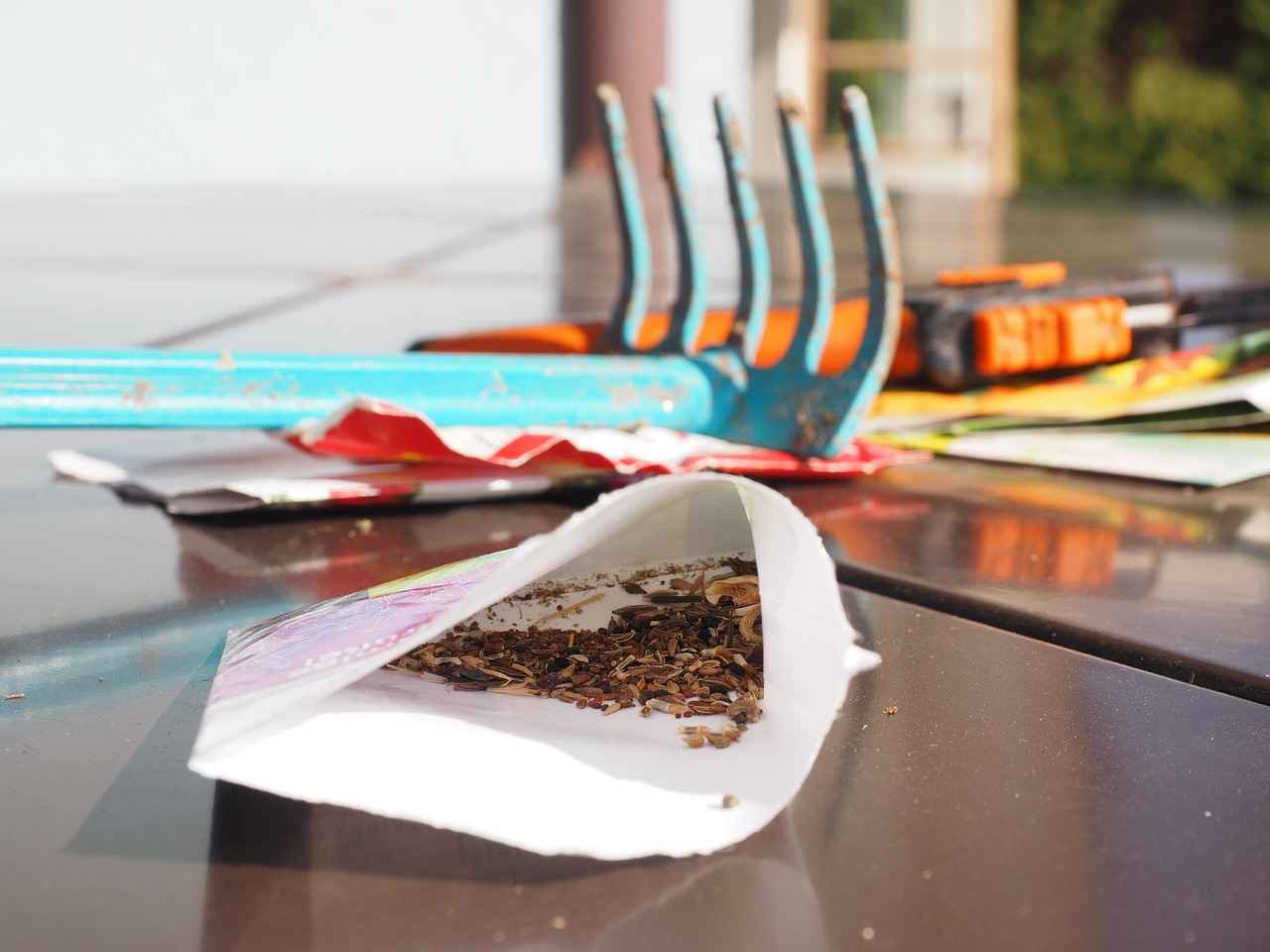
How to Use Chia Seeds in Smoothies?
Chia seeds have gained immense popularity in recent years, especially among health enthusiasts. One of the most delightful ways to incorporate these tiny powerhouses into your diet is through smoothies. Not only do they enhance the nutritional value of your drink, but they also introduce a unique texture that many find appealing.
When you add chia seeds to your smoothies, you are not just increasing the nutrient content; you are also improving the overall experience. These seeds are rich in omega-3 fatty acids, which are essential for heart health, and they contain an impressive amount of fiber, which aids in digestion. The addition of chia seeds helps to create a satisfying, thicker consistency, making your smoothie more filling and enjoyable.
Before adding chia seeds to your smoothie, it’s crucial to prepare them properly. While you can add them directly to your blend, soaking them first can enhance their benefits. Soaking chia seeds in water or your favorite milk for about 20-30 minutes allows them to absorb liquid, expand, and form a gel-like texture. This not only aids in digestion but also ensures that the seeds blend more smoothly into your drink.
- Berry Blast Smoothie: Combine chia seeds with mixed berries, banana, and yogurt for a refreshing treat.
- Green Power Smoothie: Blend chia seeds with spinach, avocado, and almond milk for a nutrient-dense green drink.
- Tropical Delight Smoothie: Use chia seeds with pineapple, mango, and coconut water for a taste of the tropics.
Absolutely! Chia seeds can be a fantastic addition to smoothie bowls as well. After blending your favorite smoothie ingredients, pour the mixture into a bowl and top it with soaked chia seeds, fresh fruits, nuts, and granola. This not only enhances the flavor but also adds a pleasing crunch to your meal.
Incorporating chia seeds into your smoothies can offer numerous health benefits. The high fiber content promotes a feeling of fullness, which can aid in weight management. Additionally, the omega-3 fatty acids present in chia seeds can help reduce inflammation and support brain health. Regular consumption may also contribute to better digestive health, thanks to the soluble fiber that aids in regular bowel movements.
To maintain the freshness and nutritional value of your chia seeds, store them in an airtight container in a cool, dark place. This will help preserve their essential oils and prevent them from going rancid. Additionally, keeping them in the refrigerator can extend their shelf life.
Chia seeds are incredibly versatile and can be used in various recipes beyond smoothies. They can be added to oatmeal, baked goods, and even salads for an extra nutritional boost. Their ability to absorb liquid makes them perfect for creating chia seed puddings and energy bars as well.
In conclusion, adding chia seeds to your smoothies is a simple yet effective way to enhance their nutritional profile while enjoying a delightful texture. With endless combinations and health benefits, chia seeds are an excellent addition to your daily diet.
What Are Some Popular Smoothie Combinations?
When it comes to creating a nutrient-dense smoothie, combining chia seeds with various fruits and greens can elevate both the flavor and health benefits of your drink. Not only do chia seeds provide essential nutrients, but they also add a unique texture that enhances the overall smoothie experience. Below are some popular combinations that can help you kick-start your day with a delicious energy boost.
Bananas are a fantastic base for smoothies due to their creamy texture and natural sweetness. When blended with chia seeds, you get a fiber-rich drink that keeps you full longer. Simply blend:
- 1 ripe banana
- 1 tablespoon chia seeds
- 1 cup almond milk (or any milk of your choice)
- A dash of cinnamon for flavor
This combination is not only delicious but also provides a great source of potassium and healthy fats.
Berries such as strawberries, blueberries, and raspberries are loaded with antioxidants. When combined with chia seeds, they create a vibrant and nutrient-packed smoothie. Try this recipe:
- 1 cup mixed berries (fresh or frozen)
- 1 tablespoon chia seeds
- 1 cup coconut water or yogurt
- A teaspoon of honey for sweetness (optional)
This smoothie not only boosts your immune system but also supports skin health.
For those looking to incorporate more greens into their diet, a green smoothie is an excellent choice. Combine chia seeds with leafy greens to create a refreshing drink:
- 1 cup spinach or kale
- 1 banana
- 1 tablespoon chia seeds
- 1 cup almond or coconut milk
- A squeeze of lemon for added zing
This combination provides a powerhouse of vitamins and minerals, promoting overall wellness.
Transport yourself to a tropical paradise with this delicious smoothie. Combine chia seeds with tropical fruits for a refreshing drink:
- 1 cup pineapple chunks
- 1 ripe mango
- 1 tablespoon chia seeds
- 1 cup coconut milk
This smoothie is not only hydrating but also rich in vitamin C and beneficial enzymes.
If you have a sweet tooth, this chocolate smoothie is perfect for you. It satisfies cravings while still being healthy:
- 1 banana
- 1 tablespoon cocoa powder
- 1 tablespoon chia seeds
- 1 cup milk (dairy or non-dairy)
This combination offers a delicious treat that is also rich in antioxidants and healthy fats.
Incorporating these popular smoothie combinations into your diet not only enhances your nutrient intake but also provides a delightful way to enjoy the benefits of chia seeds. Experiment with these recipes and feel free to mix and match ingredients to find your perfect blend!
Can You Make Chia Seed Pudding?
Chia seed pudding has gained immense popularity as a nutritious and delicious dessert. This versatile dish not only satisfies your sweet cravings but also packs a punch in terms of health benefits. With its simple preparation method, chia seed pudding can be tailored to suit various tastes and dietary preferences.
Chia seeds are rich in omega-3 fatty acids, fiber, and protein, making them an excellent addition to your diet. When transformed into pudding, they offer a creamy texture that can be enjoyed at any time of the day. The high fiber content in chia seeds helps in promoting digestive health and keeps you feeling full longer, which can be beneficial for weight management.
Making chia seed pudding is incredibly straightforward. Start by mixing 1/4 cup of chia seeds with 1 cup of your favorite milk (dairy or plant-based). Add a sweetener of your choice, such as honey, maple syrup, or agave nectar, to taste. Stir the mixture well to prevent clumping.
After mixing, cover the bowl or transfer it to a jar and refrigerate for at least 2 hours. For optimal results, leaving it overnight allows the chia seeds to fully absorb the liquid, creating a thick and satisfying pudding.
- Chocolate Chia Seed Pudding: Add cocoa powder and a splash of vanilla extract for a rich flavor.
- Fruit-Infused Pudding: Blend in pureed fruits like bananas or berries for a natural sweetness.
- Spiced Chia Seed Pudding: Incorporate spices like cinnamon or nutmeg for a warm, comforting taste.
Absolutely! Toppings can elevate your chia seed pudding experience. Consider adding:
- Fresh Fruits: Sliced bananas, berries, or mangoes.
- Nuts and Seeds: Almonds, walnuts, or pumpkin seeds for added crunch.
- Granola: A sprinkle of granola for texture and sweetness.
Chia seed pudding can be served in various ways. You can enjoy it as a breakfast option, a midday snack, or a dessert after dinner. Its versatility allows it to fit seamlessly into any meal plan.
Yes! One of the best features of chia seed pudding is its meal prep potential. You can prepare several servings at once and store them in the refrigerator for up to 5 days, making it a convenient option for busy individuals.
In conclusion, chia seed pudding is not only easy to make but also a nutritious addition to your diet. With endless flavor combinations and topping options, it can be customized to suit any palate. Embrace this delightful dessert and enjoy the health benefits that come with it!
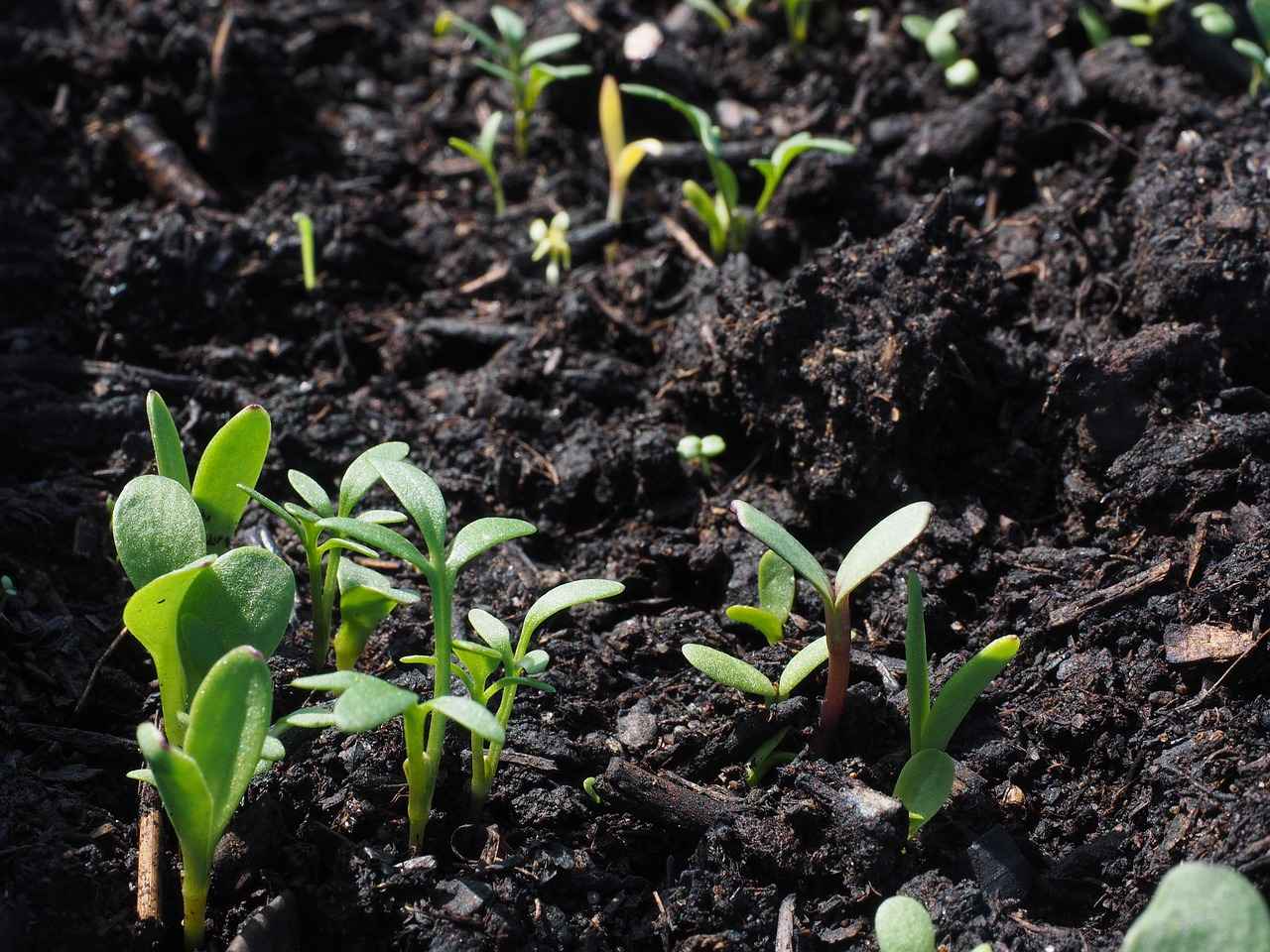
How to Incorporate Chia Seeds into Your Breakfast?
Incorporating chia seeds into your breakfast can transform a simple meal into a powerhouse of nutrition. These tiny seeds are not only versatile but also packed with essential nutrients that can boost your overall health. Let’s explore some creative and delicious ways to include chia seeds in your morning routine.
Chia seeds are a fantastic source of omega-3 fatty acids, fiber, and protein, making them an excellent addition to your breakfast. They help keep you feeling full longer, which can aid in weight management. Moreover, their high fiber content supports digestive health, making them a smart choice for your first meal of the day.
- Sprinkle on Oatmeal: Add a tablespoon of chia seeds to your morning oatmeal. They not only enhance the texture but also provide a nutritional boost.
- Mix into Yogurt: Stir chia seeds into your yogurt for added crunch and health benefits. You can also top it with fruits and nuts for a wholesome breakfast.
- Blend into Smoothies: Toss chia seeds into your smoothie blend. They will thicken the mixture and add a creamy texture without altering the flavor.
- Make Chia Seed Pudding: Combine chia seeds with almond milk or coconut milk and let it sit overnight. In the morning, you’ll have a delicious pudding that you can top with fruits and honey.
- Chia-Infused Pancakes: Add chia seeds to your pancake batter. They will provide extra nutrition and a delightful texture to your pancakes.
Preparing chia seeds is incredibly simple. You can use them raw or soak them in liquid. Soaking is recommended as it enhances their digestibility and nutrient absorption. To soak, mix chia seeds with water or milk in a 1:4 ratio and let them sit for about 20-30 minutes. This will allow them to expand and form a gel-like consistency, which can be easily added to various breakfast dishes.
Absolutely! Incorporating chia seeds into breakfast muffins is an excellent way to boost their nutritional content. Simply add a few tablespoons of chia seeds to your muffin batter. They will not only enhance the nutritional profile but also add a pleasant texture.
- Avocado Toast: Top your avocado toast with chia seeds for an added crunch and nutritional boost.
- Chia Seed Jam: Make a quick jam by blending fruits with chia seeds and letting it sit to thicken. Spread it on toast or mix it into yogurt.
- Chia Seed Granola: Incorporate chia seeds into homemade granola for an extra layer of nutrition.
In summary, adding chia seeds to your breakfast is a simple yet effective way to enhance the nutritional value of your meals. With their numerous health benefits and versatility, chia seeds can easily become a staple in your morning routine. Whether you prefer them in smoothies, oatmeal, or baked goods, these tiny seeds pack a powerful punch that can help kickstart your day.
What Are Some Breakfast Ideas with Chia Seeds?
When it comes to enhancing your breakfast with nutritional powerhouses like chia seeds, the possibilities are endless. These tiny seeds are not only versatile but also packed with essential nutrients, making them a fantastic addition to your morning meals. Here are some creative and delicious ideas to incorporate chia seeds into your breakfast routine.
A classic breakfast choice, avocado toast becomes even more nutritious with the addition of chia seeds. Simply mash ripe avocado on whole-grain toast, sprinkle a tablespoon of chia seeds on top, and finish with a drizzle of olive oil and a pinch of salt. The chia seeds add a delightful crunch and boost the omega-3 fatty acid content of your meal.
Overnight oats are a quick and easy breakfast option, and adding chia seeds makes them even more satisfying. Combine rolled oats, chia seeds, your choice of milk, and sweetener in a jar. Let it sit overnight in the fridge. In the morning, add fruits, nuts, or a dollop of yogurt for a delicious and nutrient-dense meal that keeps you full for hours.
For a grab-and-go option, consider baking breakfast muffins enriched with chia seeds. Mix chia seeds into your favorite muffin batter—whether it’s banana, blueberry, or pumpkin spice. Not only do they enhance the texture, but they also provide a healthy dose of fiber and protein, making your muffins a nourishing start to your day.
Transform your smoothie into a bowl by adding chia seeds. Blend your choice of fruits with yogurt or milk, then stir in chia seeds for added thickness and nutrition. Top with granola, sliced fruits, and a sprinkle of seeds for a visually appealing and delicious breakfast that’s perfect for social media sharing!
Why not add some chia seeds to your pancake batter? Mixing in a few tablespoons of chia seeds gives your pancakes a unique texture and boosts their nutritional value. Serve with fresh fruit and a drizzle of maple syrup for a delightful breakfast that everyone will love.
Create a layered yogurt parfait with chia seeds for a refreshing breakfast option. Alternate layers of yogurt, chia seeds, and your favorite fruits or granola in a glass. This not only looks appealing but also provides a balanced meal with probiotics, protein, and healthy fats.
Chia seed pudding is another fantastic breakfast idea. Combine chia seeds with almond milk and a sweetener of your choice, then let it sit overnight. In the morning, stir in flavors like vanilla or cocoa powder, and top with fruits and nuts. This creamy pudding is not only delicious but also a great way to start your day with energy.
In conclusion, incorporating chia seeds into your breakfast can enhance both the flavor and nutritional profile of your meals. From avocado toast to smoothie bowls, these tiny seeds offer a variety of ways to kickstart your day with health and vitality.
Can You Add Chia Seeds to Salads?
Chia seeds have gained significant popularity in recent years due to their impressive nutritional profile and versatility in various dishes. One of the most innovative ways to incorporate these tiny seeds into your meals is by adding them to salads. This not only enhances the flavor but also provides a myriad of health benefits. In this article, we will explore how chia seeds can transform your salads into nutrient-packed meals.
Chia seeds are rich in omega-3 fatty acids, fiber, and protein, making them an excellent choice for boosting the nutritional value of your salads. Their unique ability to absorb liquid means they can help keep you hydrated while providing a satisfying crunch.
When sprinkled on salads, chia seeds add a delightful crunch that contrasts beautifully with the freshness of vegetables. Their mild, nutty flavor complements a variety of dressings and toppings, making them a versatile ingredient. Furthermore, when chia seeds absorb moisture, they swell and create a gel-like consistency, which can add an interesting texture to your salads.
- Chia Seed Dressing: Blend chia seeds with olive oil, vinegar, and herbs to create a nutrient-rich dressing.
- Salad Toppings: Sprinkle chia seeds over mixed greens, roasted vegetables, or grain-based salads for added crunch.
- Chia Seed Gel: Prepare a chia gel by soaking seeds in water and then mix it into your salad for a unique twist.
Incorporating chia seeds into your salads can lead to numerous health benefits:
- Heart Health: The omega-3 fatty acids in chia seeds can help reduce inflammation and lower blood pressure.
- Digestive Health: High fiber content promotes healthy digestion and regularity.
- Weight Management: The fiber in chia seeds can help you feel full longer, aiding in weight loss efforts.
Preparing chia seeds is simple. You can choose to use them raw or soak them in liquid for a few minutes before adding them to your salad. Soaking enhances their digestibility and increases nutrient absorption, allowing your body to reap maximum benefits.
Absolutely! Chia seeds pair well with a variety of ingredients. Consider combining them with:
- Leafy Greens: Spinach, kale, or arugula provide a nutritious base.
- Fruits: Berries, oranges, or apples add a sweet contrast to the earthy flavor of chia seeds.
- Proteins: Add grilled chicken, chickpeas, or tofu for a complete meal.
While chia seeds are generally safe for most people, it’s important to consume them in moderation. Starting with a small amount and gradually increasing can help prevent any digestive discomfort due to their high fiber content. Always drink plenty of water when consuming chia seeds to aid in digestion.
Incorporating chia seeds into your salads is a simple yet effective way to enhance both flavor and nutrition. With their numerous health benefits and versatility, chia seeds can truly elevate your salad game.
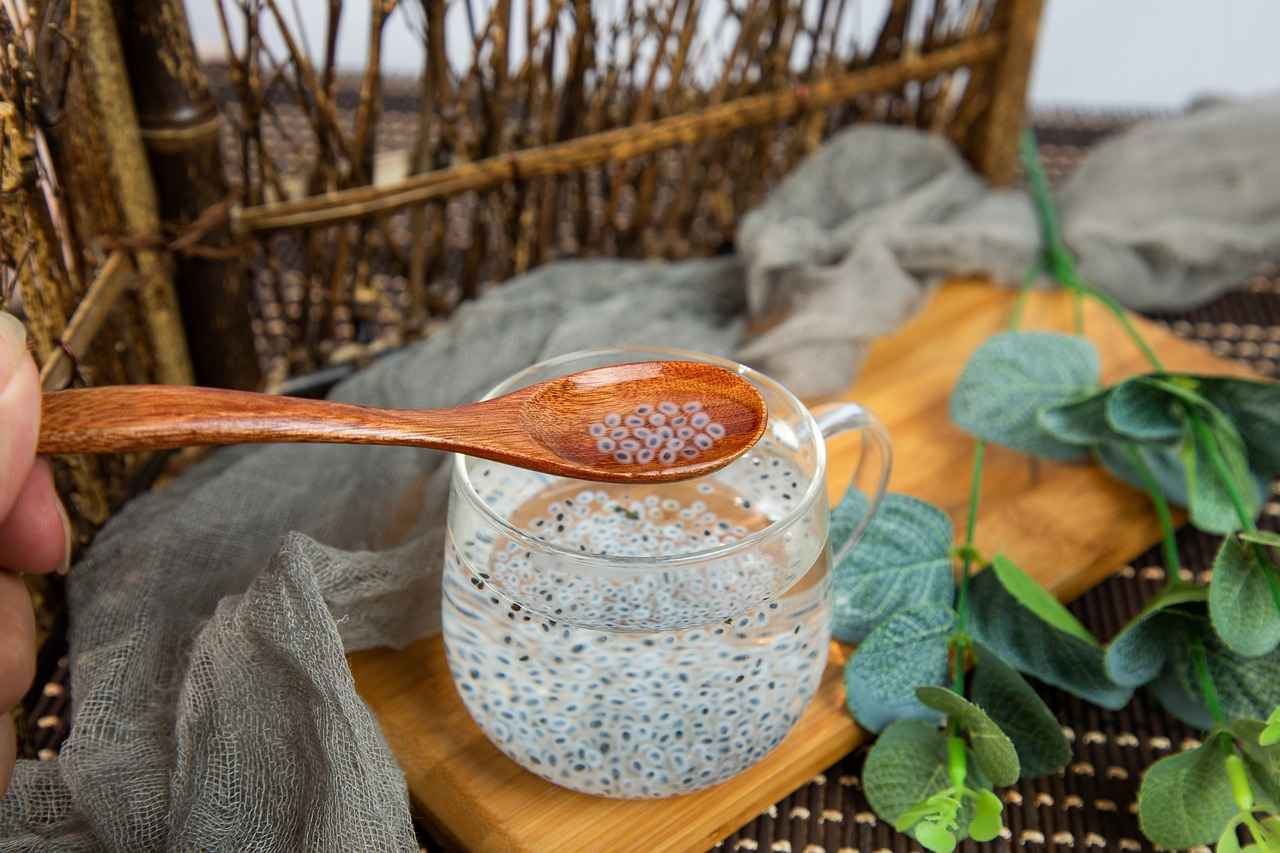
What Are the Health Benefits of Regular Chia Seed Consumption?
Chia seeds have gained immense popularity in recent years, and for good reason. These tiny black seeds, derived from the Salvia hispanica plant, are a powerhouse of nutrients that can significantly enhance your overall health. Regular consumption of chia seeds can lead to a multitude of benefits, including improved heart health, better digestion, and increased energy levels.
One of the most notable benefits of chia seeds is their ability to support heart health. Rich in omega-3 fatty acids, these seeds help reduce inflammation and lower cholesterol levels. Omega-3s are essential fats that can decrease the risk of heart disease by improving blood lipid profiles and reducing blood pressure. Regularly incorporating chia seeds into your diet can lead to a healthier cardiovascular system.
Chia seeds are an excellent source of dietary fiber, which plays a crucial role in digestive health. Fiber helps to regulate bowel movements, preventing constipation and promoting a healthy gut. When chia seeds are consumed, they absorb water and expand, forming a gel-like substance that aids in digestion. This property not only promotes regularity but also enhances the feeling of fullness, making them a great addition to meals for those looking to manage their weight.
Another significant benefit of chia seeds is their ability to provide a sustained energy boost. Packed with protein, healthy fats, and fiber, they offer a balanced source of energy that can keep you feeling full and energized throughout the day. This makes them an ideal snack for athletes and active individuals. Additionally, the combination of nutrients in chia seeds helps stabilize blood sugar levels, preventing energy crashes.
Chia seeds are also rich in antioxidants, which combat oxidative stress and inflammation in the body. Antioxidants help protect your cells from damage caused by free radicals, which can lead to chronic diseases. Including chia seeds in your diet can enhance your body’s defense mechanisms and promote overall health.
Incorporating chia seeds into your daily meals is easy and versatile. Here are some popular methods:
- Chia Seed Pudding: Mix chia seeds with your choice of milk and let them soak overnight for a delicious and nutritious breakfast.
- Smoothies: Add a tablespoon of chia seeds to your favorite smoothie for an extra nutrient boost.
- Oatmeal: Sprinkle chia seeds on top of your morning oatmeal for added texture and health benefits.
- Salads: Toss chia seeds into salads for a crunchy texture and a nutritional boost.
While chia seeds are generally safe for most people, it is important to consume them in moderation. Due to their high fiber content, excessive consumption can lead to digestive discomfort. It’s advisable to start with a small amount and gradually increase your intake to allow your digestive system to adjust.
In summary, the health benefits of regularly consuming chia seeds are extensive. From promoting heart health and aiding digestion to boosting energy levels and providing antioxidants, these tiny seeds can make a significant impact on your overall health. By incorporating them into your diet, you can enjoy a variety of delicious meals while reaping their numerous health benefits.
How Do Chia Seeds Support Weight Loss?
Chia seeds have gained popularity as a powerful ally in the quest for weight loss. Their unique composition plays a crucial role in promoting satiety and reducing overall calorie intake. By understanding how these tiny seeds can support weight management, individuals can make informed dietary choices.
Chia seeds are rich in fiber, containing approximately 11 grams of fiber per ounce. This high fiber content is essential for weight loss because it helps create a feeling of fullness or satiety. When consumed, chia seeds absorb liquid and expand in the stomach, forming a gel-like substance that slows down digestion. This process not only helps curb hunger but also stabilizes blood sugar levels, preventing spikes that can lead to cravings.
The gel-like consistency of soaked chia seeds can significantly influence appetite control. By increasing the volume of food in the stomach without adding many calories, they can help reduce the overall amount of food consumed during meals. This mechanism is particularly beneficial for those looking to manage their weight without feeling deprived.
Incorporating chia seeds into your meals can be an effective strategy for replacing higher-calorie ingredients. For example, they can be added to smoothies, yogurt, or oatmeal, enhancing the nutritional value without adding excessive calories. Additionally, chia seeds can be used as a thickening agent in recipes, allowing for the reduction of other calorie-dense ingredients.
- Omega-3 Fatty Acids: Chia seeds are an excellent source of plant-based omega-3 fatty acids, which are known to support heart health.
- Protein Content: With about 4 grams of protein per ounce, chia seeds contribute to muscle repair and growth, which is essential for maintaining a healthy metabolism.
- Antioxidants: These seeds are packed with antioxidants that help combat oxidative stress and inflammation in the body.
Adding chia seeds to your diet is simple and versatile. Here are some practical ways to include them:
- Chia Pudding: Mix chia seeds with your choice of milk, sweetener, and flavorings. Let it sit overnight for a delicious breakfast or snack.
- Smoothies: Blend chia seeds into your favorite smoothie for added texture and nutrition.
- Baking: Substitute a portion of flour in recipes with ground chia seeds to boost fiber content.
While chia seeds are generally safe for most people, it’s important to consume them in moderation. Starting with a small amount and gradually increasing intake can help prevent digestive discomfort, particularly for those not accustomed to high-fiber foods.
In summary, chia seeds are a nutrient-dense superfood that can support weight loss by promoting feelings of fullness and enhancing overall nutrition. By incorporating them into your daily diet, you can enjoy their numerous health benefits while working towards your weight management goals.
Are There Any Potential Side Effects?
Chia seeds have gained immense popularity in recent years, celebrated for their numerous health benefits and versatility in the kitchen. However, as with any food, it is essential to understand the potential side effects associated with their consumption. While chia seeds are generally safe for most people, overconsumption can lead to some digestive issues, and it’s crucial to approach their introduction into your diet with care.
Chia seeds are tiny, nutrient-dense seeds that come from the Salvia hispanica plant. They are rich in omega-3 fatty acids, dietary fiber, protein, and various essential minerals. These attributes make them a popular choice for health enthusiasts looking to enhance their diet. However, the very characteristics that make chia seeds beneficial can also lead to potential side effects when consumed in excessive amounts.
When chia seeds are consumed in moderation, they can contribute significantly to your overall health. However, overconsumption might lead to various digestive issues:
- Bloating: Due to their high fiber content, consuming too many chia seeds at once can lead to bloating and discomfort.
- Gas: An increase in fiber intake can result in gas production, especially if your body is not accustomed to a high-fiber diet.
- Constipation: If not enough water is consumed alongside chia seeds, they can expand in the digestive tract, potentially leading to constipation.
To enjoy the health benefits of chia seeds while minimizing the risk of side effects, it is advisable to start with a small amount. A recommended starting point is about one tablespoon (approximately 15 grams) per day. Gradually increase your intake as your body adjusts to the added fiber. Here are some practical tips:
- Soak Before Eating: Soaking chia seeds in water or milk before consumption can help reduce the risk of digestive discomfort. This process allows them to absorb liquid and expand, making them easier to digest.
- Stay Hydrated: Ensure you drink plenty of water throughout the day, especially when consuming high-fiber foods like chia seeds.
- Mix with Other Foods: Incorporating chia seeds into smoothies, yogurt, or oatmeal can help balance their fiber content with other nutrients, easing digestion.
While most people can enjoy chia seeds without issues, certain individuals should exercise caution:
- Those with Digestive Disorders: If you have a history of digestive issues, such as irritable bowel syndrome (IBS), consult a healthcare professional before adding chia seeds to your diet.
- Pregnant or Nursing Women: While chia seeds can be part of a healthy diet, pregnant or nursing women should discuss their dietary choices with a healthcare provider.
Although rare, some individuals may experience allergic reactions to chia seeds. Symptoms can include skin rashes, itching, or gastrointestinal distress. If you suspect an allergy, it’s important to seek medical advice and discontinue use.
In conclusion, while chia seeds are a fantastic addition to a balanced diet, moderation is key. By starting with small amounts and gradually increasing your intake, you can enjoy their numerous health benefits without facing adverse effects. Always listen to your body and consult a healthcare professional if you have any concerns.
Frequently Asked Questions
- How do I prepare chia seeds for consumption?
Preparing chia seeds is super easy! You can eat them raw, but soaking them in water or milk for about 20-30 minutes is recommended. This helps them expand and become easier to digest, giving you more health benefits!
- Can I eat chia seeds dry?
Yes, you can munch on chia seeds dry! Just make sure to drink plenty of water with them to avoid any digestive discomfort, as they are high in fiber.
- What are some delicious ways to add chia seeds to my smoothies?
Chia seeds are a fantastic addition to smoothies! Try blending them with bananas, berries, or leafy greens for a tasty and nutritious drink that packs an energy punch!
- Is chia seed pudding easy to make?
Absolutely! To make chia seed pudding, mix chia seeds with your favorite milk and a sweetener, then let it chill in the fridge until it thickens. It’s a simple and delightful treat!
- How can I incorporate chia seeds into my breakfast?
Chia seeds can easily jazz up your breakfast! Sprinkle them on oatmeal, mix them into yogurt, or blend them into pancakes for a nutritious start to your day.
- Are there any side effects of consuming chia seeds?
While chia seeds are generally safe, eating too many at once can lead to digestive issues. It’s best to start with a small amount and gradually increase your intake.
